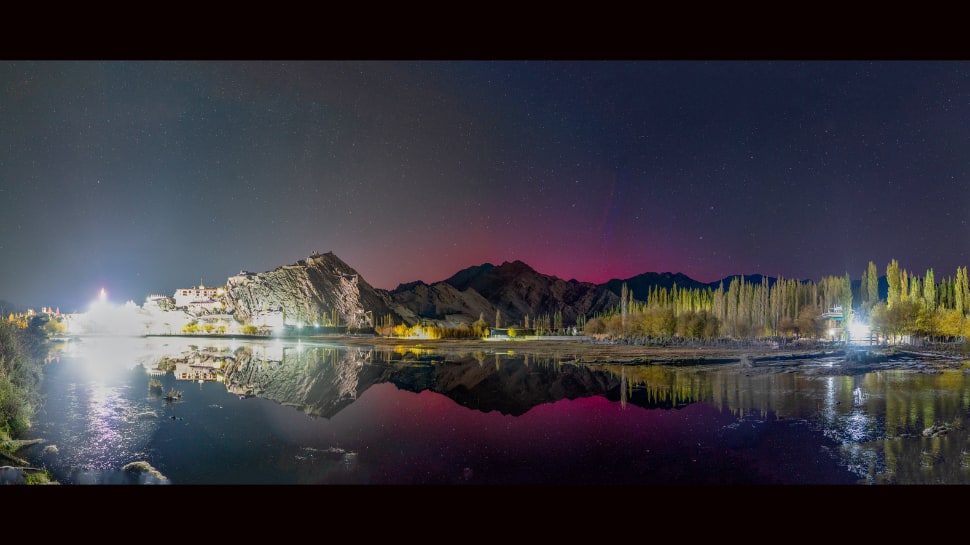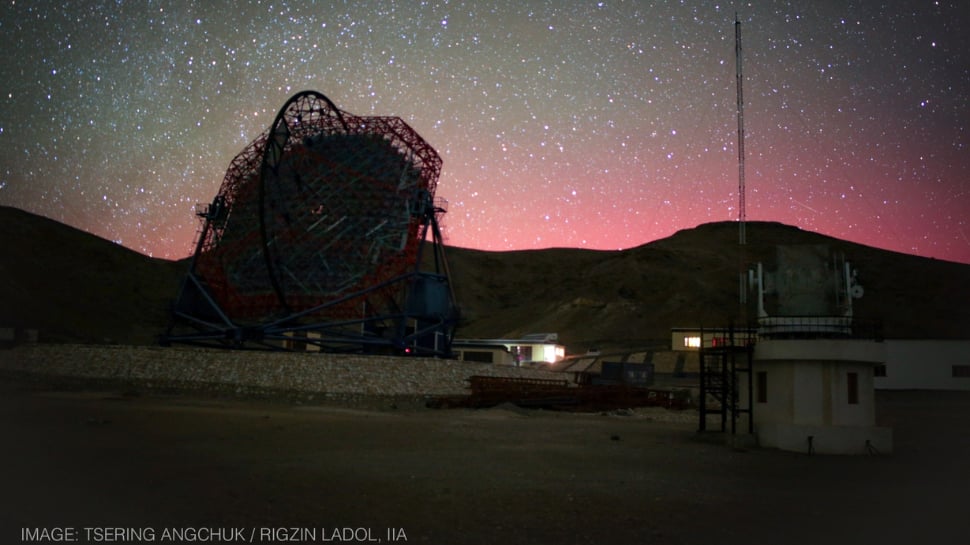Auroras Lights Up Leh Skies: What Triggered This Rare Phenomenon, And Will There Be Any Consequences In The Future?
A rare display of auroras in Leh occurred after a powerful solar storm struck Earth, resulting in northern lights visible at lower latitudes. This geomagnetic event, triggered by a solar flare on October 9. Let's take a look at the effects of solar storms and their potential consequences.
)
A rare and mesmerizing display of auroras illuminated the night sky in Leh, Ladakh, following a powerful geomagnetic storm that struck the Earth on Thursday (the intervening night of 10-11 Oct). The phenomenon, usually seen at higher latitudes, was observed at India's highest observatory in Hanle, marking a unique event in the region.
(Picture source - X/IIAstrophysics)

Auroras are typically visible in areas closer to the poles, but the increased intensity and frequency of solar storms this year have extended their visibility to lower latitudes. This particular storm allowed for sightings in unexpected locations, including parts of New Mexico and Alabama in the southern United States.
(Picture source - X/IIAstrophysics)

The auroras, also known as the 'aurora borealis' or northern lights, occur when coronal mass ejections (CMEs), large bursts of solar energy, interact with Earth's atmosphere. These interactions produce vivid colors—blue and purple from nitrogen, and green and red from oxygen—creating the breathtaking visual display.
(Picture source - X/IIAstrophysics)

In Leh, telescopes operated by the Indian Department of Science and Technology captured the red auroral transmissions, offering a rare glimpse of this phenomenon in the region. The stunning event was a direct result of a geomagnetic storm caused by a solar flare on October 9, traveling at a staggering speed of 1.5 million miles per hour.
(Picture source - X/IIAstrophysics)

The National Oceanic and Atmospheric Administration (NOAA) classified this solar storm as G4, indicating severe conditions. Such storms have the potential to disrupt critical systems, including power grids and satellite operations, raising concerns despite the spectacle.
(Picture source - X/IIAstrophysics)

Solar activity follows an 11-year cycle, peaking at the solar maximum, which is expected in 2025. As we approach this peak, experts predict more frequent and intense solar storms, which may bring about more aurora sightings, even in regions not typically prone to them.
(Representative image - Freepik)

While these auroras are visually stunning, they also come with significant risks. High-frequency radio communications, satellite navigation, and even power grids can be impacted by such geomagnetic storms, posing potential challenges to modern infrastructure.
(Representative image - Freepik)

As solar storms continue, the world may witness more awe-inspiring auroras, but with them come potential disruptions that remind us of the immense power of space weather and its effects on Earth.
(Representative image - Freepik)
Trending Photos








